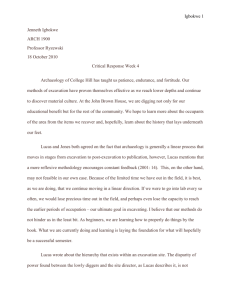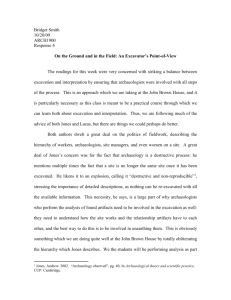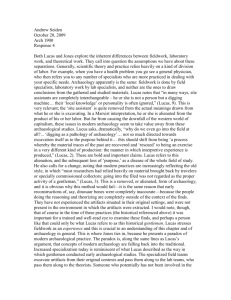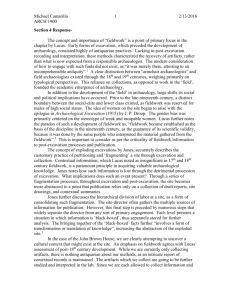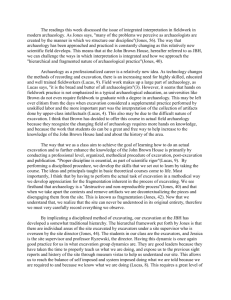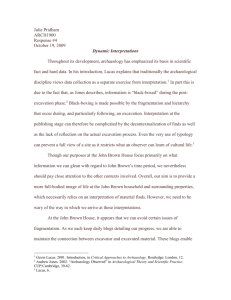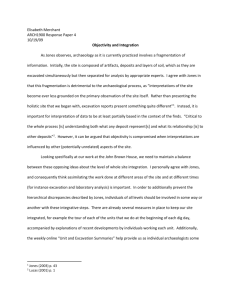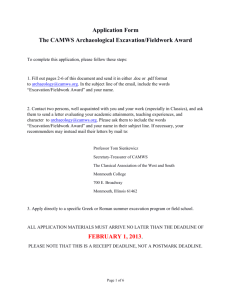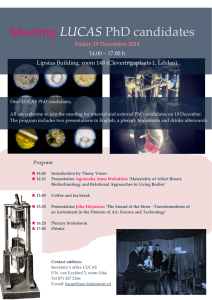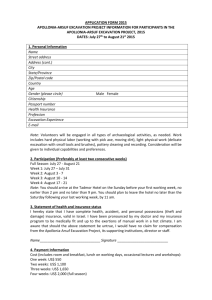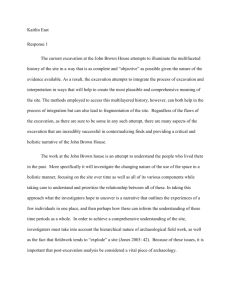Sarah Roberts Critical Response 4
advertisement
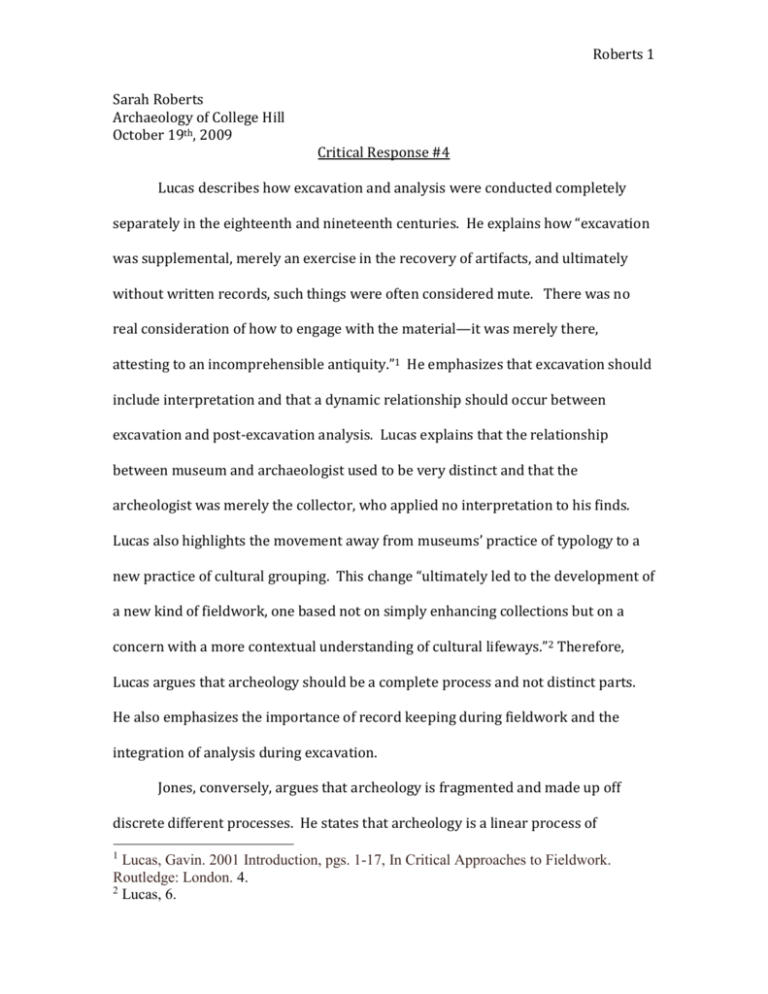
Roberts 1 Sarah Roberts Archaeology of College Hill October 19th, 2009 Critical Response #4 Lucas describes how excavation and analysis were conducted completely separately in the eighteenth and nineteenth centuries. He explains how “excavation was supplemental, merely an exercise in the recovery of artifacts, and ultimately without written records, such things were often considered mute. There was no real consideration of how to engage with the material—it was merely there, attesting to an incomprehensible antiquity.”1 He emphasizes that excavation should include interpretation and that a dynamic relationship should occur between excavation and post-excavation analysis. Lucas explains that the relationship between museum and archaeologist used to be very distinct and that the archeologist was merely the collector, who applied no interpretation to his finds. Lucas also highlights the movement away from museums’ practice of typology to a new practice of cultural grouping. This change “ultimately led to the development of a new kind of fieldwork, one based not on simply enhancing collections but on a concern with a more contextual understanding of cultural lifeways.”2 Therefore, Lucas argues that archeology should be a complete process and not distinct parts. He also emphasizes the importance of record keeping during fieldwork and the integration of analysis during excavation. Jones, conversely, argues that archeology is fragmented and made up off discrete different processes. He states that archeology is a linear process of 1 Lucas, Gavin. 2001 Introduction, pgs. 1-17, In Critical Approaches to Fieldwork. Routledge: London. 4. 2 Lucas, 6. Roberts 2 excavation, post-excavation and publication. He relates this structure to an excavation site’s stratified layers. After the land is removed layer by layer, it is analyzed piece by piece. He reminds the reader that archeology is a destructive process and that the interpretations are conducted away from the initial site, causing further fragmentation.3 Jones argues that this structure of fragmentation is caused by the fact that “knowledge is generated in a hierarchical framework.”4 Lucas concludes that an inclusive interpretation must be made and that all processes during archaeology must be dynamic.5 In our work at the John Brown House, I believe we are already making efforts to integrate our analysis with our excavating. Taking the tour of the John Brown House in the middle of our digging weeks helped us all to gain more understanding of our findings. By learning about the context of where we are digging, we can begin to analyze our findings even before we are working in the lab. Ideally, it would be very beneficial to go back and forth between lab days and dig days so that we could fully understand all of the material finds, while we are digging for more clues. This would allow our data and theory to be dynamic processes. Additionally, it would be valuable to have studied even more about the site, the neighbors and the history of the city of Providence, before we began to dig. I personally agree with Lucas’ ideas and I believe that we are doing our best to integrate our interpretation and study with our digging, given our circumstances. For example, we are working with the John Brown House museum and are not merely working towards a collection of 3 Jones, Andrew. 2002 Archaeology observed, pgs. 39-62, In Archaeological theory and scientific practice. CUP: Cambridge. 41-42 4 Jones, 44. 5 Jones, 62. Roberts 3 goods, but a better cultural understanding of historical Providence. Unfortunately we do not have ample time to conduct all of the ideal research and do all of the possible preparatory work.
